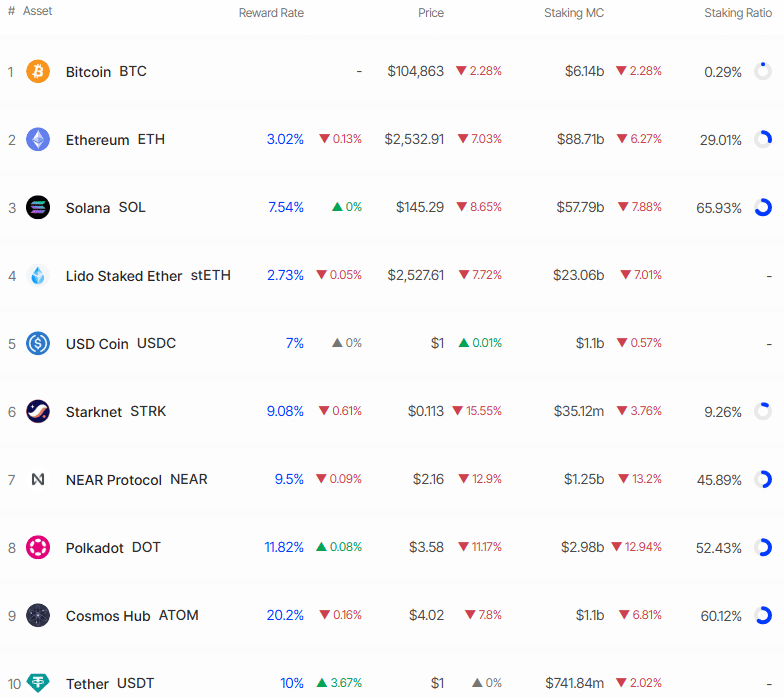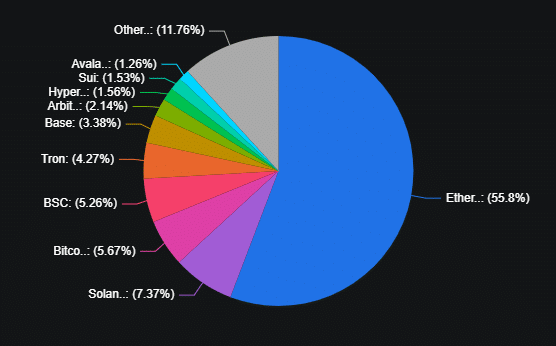- The staking rewards for Ethereum have been falling, by design, as the amount of effective ETH staked has grown.
- Yield-bearing stablecoins and DeFi products give greater returns, but Ethereum was not necessarily losing the battle.
Ethereum [ETH] continued to range between $2.4k and $2.8k. The bulls have managed to hold the line despite significant short-term volatility.
Over the past month, there have been multiple days when the day’s high and low were nearly 10% apart.
AMBCrypto’s analysis showed that the leading altcoin was in a consolidation phase. In an earlier report, the importance of the 50-week moving average was highlighted. Ethereum was still trading below this dynamic resistance.

Source: Glassnode
A significant portion of long-term investors, confident in the network’s fundamentals, have their ETH parked in staking.
At the time of writing, 34.9 million ETH, or 29% of the circulating supply, were participating in the Proof-of-Stake consensus.


Source: Beaconcha.in
Alongside the growing amount of ETH staked, the Ethereum staking reward has fallen since 2023. On the 17th of June, this rate was at 2.987% per annum.
This is for the consensus staking rewards, not the execution layer. By design, as more ETH is staked across the network, the reward per validator will diminish.


Source: Staking Rewards
Other chains seem to offer a higher reward rate, for example, Solana [SOL] at 7.54%, Polkadot [DOT] at 11.82%, and Cosmos Hub [ATOM] at 20.2%.
However, these networks have much higher inflation than ETH, with Solana at 4.5%, and Polkadot at 7.78%. Compared to just 0.7% inflation for Ethereum, these alternative chains were not as big a challenge as other protocols.
Yield-bearing stablecoins, DeFi lending protocols earn more
Holding stablecoins such as UST or USDC does not earn the holders passive income. Yield-bearing stablecoins let users hold a dollar-pegged asset while earning passive income.
Ethena’s staked USDe [SUSDE], one of the leading yield-bearing stablecoins by market cap, has a current yield of 5.81%. Historically, it has delivered some of the highest returns, ranging from 10% to 25% APY.


Source: Stablewatch
Leading DeFi lending protocols such as Aave [AAVE], MakerDAO [MKR] (now rebranded to Sky), and Compound [COMP] earn by letting users (lenders) deposit their crypto into a “liquidity pools” on the platform.
Other users (borrowers) can take out loans from these pools by using crypto as collateral.
At the time of writing, AAVE staking has a reward rate of 4.63%, beating ETH’s 3%.
The higher return can attract users to DeFi lending platforms over directly staking ETH. Yet, that does not mean Ethereum is losing, as these DeFi products are built on the Ethereum network.
Their increased adoption and usage will drive Ethereum network adoption and boost transaction fees, bolstering ETH’s long-term value.


Source: DeFiLlama
This was seen in the whopping 55.8% share of the total value locked (TVL) in Ethereum. Compared to other chains, Ethereum was still a leader in the DeFi space, even if its direct staking rewards might be a little underwhelming.


